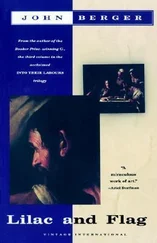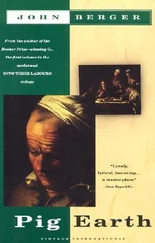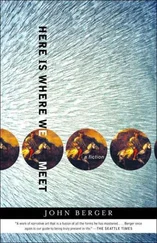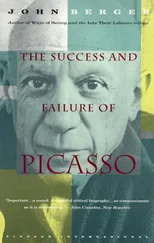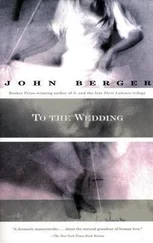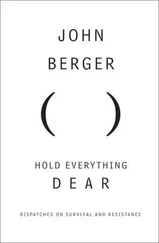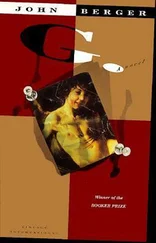It is of course true that Matisse’s standards of imagination and taste belonged to the world of the French haute bourgeoisie. No other class in the modern world enjoyed the kind of seclusion, fine taste and luxury that are expressed in Matisse’s work. It was Matisse’s narrowness (I can think of no modern artist with less interest in either history or psychology) that saved him from the negative and destructive attitudes of the class-life to which his art belonged. It was his narrowness that allowed him to enjoy this milieu without being corrupted by it, or becoming critical of it. He retained throughout his whole career something of Veronese’s naive sense of wonder that life could be so rich and luxurious. He thought and saw only in terms of silks, fabulous furnishings, the shuttered sunlight of the Côte d’Azur, women with nothing to do but lie on grass or rug for the delight of men’s calm eyes, flower-beds, private aquaria, jewellery, couturiers and perfect fruit, as though such joys and achievements, unspoilt by mention of the price, were still the desire, the ambition of the entire world. But from such a vision he distilled experiences of sensuous pleasure, which, disassociated from their circumstances, have something of the universal about them.
1954
Kokoschka’s genius is difficult to define. On the one hand, it is sensible to compare him with Rubens — not necessarily in stature, but temperamentally, because he has the same kind of scale as a painter. Like Rubens, he has painted panoramic landscapes which the light visits like an archangel at an Annunciation. Like Rubens, he glories in exotic animals and fruits, seeing them as symbols of various kinds of human power. Like Rubens, he paints human flesh as though it were a garden and each brushmark a blossom. And, like Rubens too, he is immensely confident, never failing through diffidence, but sometimes through abundance becoming chaos. Yet on the other hand, Kokoschka is a man of the twentieth century. He has not created a new language or a new form of art. What he has done is to speak with great authority in an unforgettable tone of voice — always remembering that for an artist his tone of voice is inseparable from what he has to say:
All life is a risk, but that is no reason for panic. In the normal course of things it ends in death; only in the Académie Française are immortals to be found. But to anyone who is clear about the risks of life and learns to confront them with open eyes, the inscrutable, humanized in art form, becomes comprehensible and thus loses its terror.
Kokoschka is usually labelled an Expressionist. This is misleading, because since he is often considered as a German painter, it means that he is bracketed with other German expressionists, whereas his aim, unlike theirs, was to reduce, not to parade, panic. It is also usually said that his early work is stronger than his later work, but this judgment springs from the same misconception: that he is essentially an artist of conflict and pain. In fact, his constant theme is something quite different — energy. In his earlier works, up to about 1920, he was concerned, mostly in portraits, with what is roughly called nervous energy. The spirits of his sitters crackle like lightning, and their hands, with their outstretched fingers, often look like trees that have just been struck. Later he was concerned, in his large panoramic views, with the energy of cities — with what might be called historical energy. Still later he turned to ancient legends to find themes which embodied the energy of the cycle of life itself.
But of course the word energy is too vague and too abstract to define the character of Kokoschka’s achievement and searching. It makes it easy to understand why he has turned to baroque artists for help, but it does not explain why his voice has such authority, why he is so surely a modern artist.
Energy means for him movement and development. In his portraits one has the sense that the sitter has been painted, unawares, whilst on a journey, not necessarily a physical journey, but a journey of thoughts and decisions, which is going to change — which indeed at that very moment is changing — his life. In our century of crisis these are, in this sense, the most precarious portraits painted, and in that precariousness we recognize ourselves. How often in his panoramic landscapes he includes a river or, as an important not an incidental element in the picture, birds in the sky; and these again suggest voyaging, movement, time passing. In his recent large triptychs his concern with development, with consequences, is even more obvious, for here he has painted consecutive incidents from a story — the story of Prometheus or the story of the Greeks defending Thermopylae.
Kokoschka did not of course arbitrarily select this constant theme. It has arisen from his experience. As a mid-European born in 1886, he has seen much. And he has never been a passive spectator or a remote studio man. He has prophesied and committed himself. He is acutely aware of the way our European societies alienate man from man (and incidentally believes abstract art to be a symptom of this alienation):
That technical civilization, in which we have all collaborated, has been throughout two world wars nothing but an attempt to escape disaster by means of an intensified production for the mere sake of production, and the effort is shown to be all the more senseless as the numbers of the homeless, the desperate and the starving roaming over the untilled fields of the world increase.
Consequently he has searched for a way forward, a way of release. The emotion behind most of his work is liberating. The figures, the animals, the cities in his canvases are set free: the skies around them are like those endlessly imagined by a prisoner. His richness and abundance is not luxurious as in true baroque art, rather it represents a kind of innocence. Not that he is a Utopian artist. His aim is simply to make us see what we are capable of, to warn us against accepting the idea that all circumstances are final.
His weakness as a painter is that he is sometimes formlessly effusive. This may be the result of the fact that he blames technology itself for our predicament, so that his positive alternative becomes an unselective all-embracing humanism. If he were more aware of the economic and social basis of history, his hopes might be sharper and less generalized. Nevertheless we can only honour. He has confronted our situation with open eyes and has never retreated into cynicism, nihilism or morbid subjectivity: his genius has remained expectant. Having borne witness to great suffering, he still, at the age of over seventy, believes with Blake that ‘Exuberance is Beauty’.
1952
The Clarity of the Renaissance
It’s depressing. The rain’s set in. It’s wet but we can’t grumble. It’s grey and dull. Each of these comments describes the same day from a different point of view: the subjective, the practical, the moralistic and the visual. All true painters naturally see and feel in a way that is a hundred times more acutely visual and tangible than the last, or indeed any comment, can illustrate. But what they see and feel is — normally — the same as everybody else. To say this is, I realize, platitudinous. But how often it is forgotten. Indeed, has it ever been consistently taken for granted since the sixteenth century?
I spent the other day in the National Gallery looking mainly at the Flemish and Italian Renaissance works. What is it that makes these so fundamentally different from nearly all the works — and especially our own — that have followed them? The question may seem naive. Social and stylistic historians, economists, chemists and psychologists have spent their lives defining and explaining this and many other differences between individual artists, periods and whole cultures. Such research is invaluable. But its complexity often hides from us two simple, very obvious facts. The first is that it is our own culture, not foreign ones, which can teach us the keenest lessons: the culture of individualist humanism which began in Italy in the thirteenth century. And the second fact is that, at least in painting, a fundamental break occurred in this culture two and a half centuries after it began. After the sixteenth century artists were more psychologically profound (Rembrandt), more successfully ambitious (Rubens), more evocative (Claude); but they also lost an ease and a visual directness which precluded all pretension; they lost what Berenson has called ‘tactile values’. After 1600 the great artists, pushed by lonely compulsion, stretch and extend the range of painting, break down its frontiers. Watteau breaks out towards music, Goya towards the stage, Picasso towards pantomime. A few, such as Chardin, Corot, Cézanne, did accept the strictest limitations. But before 1550 every artist did. One of the most important results of this difference is that in the great later forays only genius could triumph: before, even a small talent could give profound pleasure.
Читать дальше

